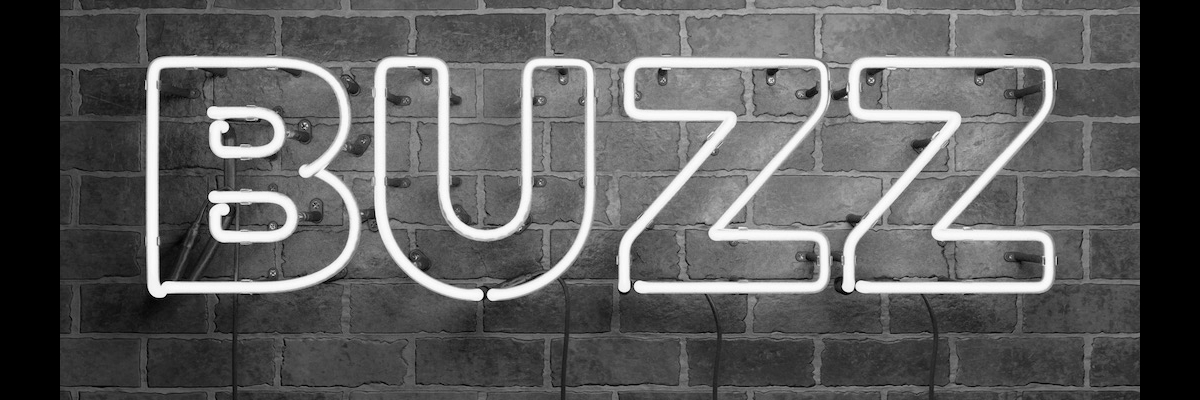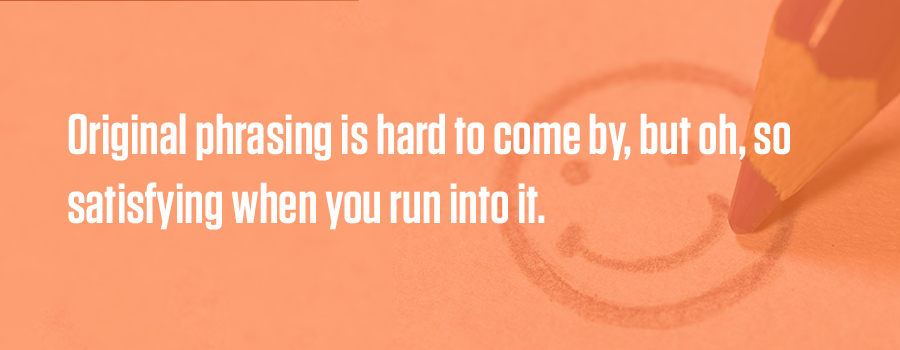
Bad Buzzwords And Good Vibrations
October 24, 2017
Marketing content is littered with buzzwords and catch phrases that sound OK the first 10,000 times you hear them, but begin to wear thin after that. Part of the problem is the pressure to produce content. Ever since content became king, the court has grown ever more crowded with copywriting courtiers. Here are a few of my least favorite, trending banalities.
Please add to this list in comments!
Bad Buzzwords
- Content is king. This king won’t die. A Google search for “content is king” yields more than 400,000 results, which is about 399,000 too many. Conceiving of content as being enthroned on the top of a hierarchy is not all that helpful. Content is an important ingredient in marketing campaigns, like the eggs in your omelet or the alcohol in your gin and tonic. Content is blended into a campaign like the sauce in your spaghetti — for tasty results, content sauce has to complement, not rule over, keyword research, font selection, A/B split testing and all the rest of it.
- This has to die. A mean-spirited way to describe a disliked idea, attitude or activity, this phrasing is a good example of what you might call antisocial media. Stating an opinion so emphatically and dramatically may draw cheers from one’s cheering section, but doesn’t set the stage for any type of constructive discussion — which is what social media is supposed to be all about, right?
- Let that sink in. Overused and pretentious, this phrase implies: I just said something so profound you’ve got to stop whatever you’re doing and process it! If you’ve actually said something profound, you don’t need an accompanying trumpet blast. The profundity will speak for itself.
- It begins. A trendy way to introduce a news item on social media, this simple phrase is deceptively problematic. What is “it?” Sometimes “it” is obvious; sometimes “it” is not. If the former, the phrase is unnecessary. If the latter, the phrase needs further elaboration. Either way, it’s annoying.

Good Vibrations
Original phrasing is hard to come by, but oh, so satisfying when you run into it. A source of inspiration for me is my local Starbucks. It has some clever baristas who may have missed their calling. A few examples:
- The first time I met one particular barista was at the drive-thru window. Instead of a “hi” or “how are you?” … he greeted me with a nonchalant, “How art thou?” I’m seldom at a loss for words, but that flummoxed me. It happened months ago, but I still chuckle when I think about it. Lesson: Original phrasing makes a lasting impression. Banalities do not.
- I asked this same barista, months later, how he was doing (banal). He replied, “Adequate.” A perfectly descriptive and nuanced response, yet one I don’t believe I’d ever heard before. Humorous with a hint of sadness. Lesson: There are no banal topics, only banal communicators.
- When I placed my usual order at the drive-thru, the 20-something barista responded through the loudspeaker with an ultra-enthusiastic, “Right on!!” Right on! I’ve been waiting for that phrase to make a comeback since 1973. Lesson: Original doesn’t necessarily mean new. What was trending is often more attention-getting than what is trending.
What copywriting hooks captured your attention recently?
We deliver! Sign up and we’ll send our valuable content right to your inbox.




